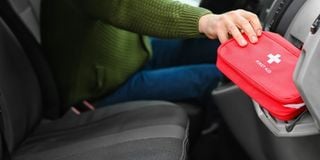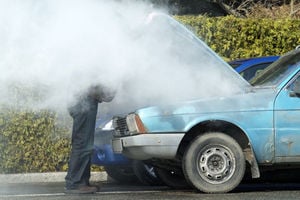
As far as I know the law insists all cars carry a first aid kit but does not stipulate what should be in it. So, aside from the law, what would you advise?
JK
Hello JK, even though the Ugandan law does not specify what should be in a car's first aid kit, I recommend including the following items for a well-stocked kit:
Bandages are a good starting point. Consider using roller bandages with dressing pads for wound dressing. Adhesive bandages in different sizes help deal with small cuts and abrasions. Triangular bandages can be used to secure a splint when you need to put an arm in a sling. Elastic bandages are useful for handling sprains.
Sterile gauze pads and rolls are very useful for controlling bleeding and covering larger wounds. They help protect wounds and promote healing.
Medical tape is another useful addition to keep bandages and dressings in place. It is important to cover wounds and avoid exposure to infection. Antiseptic wipes help to clean around a wound and protect it against infection from germs or viruses.
Tweezers and scissors are important first aid tools used for removing splinters or broken glass, as well as for cutting clothing, bandages, tape, or gauze without hurting the victim accidentally. Disposable gloves protect the first aider from cross-contamination, preventing contact with bodily fluids or pollutants and reducing the risk of infection to the victim.
Creams are useful for treating burn wounds, and Hydrocortisone can be used for allergic reactions or skin irritations. Medications such as ibuprofen or aspirin can help reduce pain caused by minor injuries. Antihistamine tablets can stop allergic reactions. Sterile eye wash is used for rinsing eyes in the event of an injury.
Instant cold packs or cold compresses can be used to reduce swelling or pain from bumps, sprains, or bruises.
A CPR face shield protects the first aider performing CPR and the victim from cross-contamination or exposure to bodily fluids, ensuring safe CPR procedures.
An emergency blanket helps maintain body temperature to prevent hypothermia. A foil blanket is a useful way to protect an accident victim from external weather while reducing the potential for shock.
It is helpful to have a first aid manual for guidance on using the first aid kit for different emergencies or injuries. It is important to check the kit frequently to ensure that its contents are not expired or damaged. Keep the first aid kit in a cool, dry place.
Whether you are travelling during routine commutes or on road trips with the family, having a first aid kit gives you some comfort that you can provide the first opportunity to heal in the unfortunate event of an accident.
WHY DOES MY STEERING VIBRATE?
My Ipsum's steering vibrates at 100 kph. What could be the cause?
Angelina
Hello Angelina, steering vibration at 100kph is often caused by unbalanced tyre pressure. For guidance about the correct tyre pressure, refer to your car's user manual or the tyre size and pressure information on the driver door pillar. Wobbly and worn-out wheel hub bearings can also cause steering vibration.
Inspect them if the engine speed is affected. Worn-out suspension components such as ball joints and control arm bushings can cause steering wobble.
Damaged or imbalanced drive shaft CV joints can cause vibration in the steering system when you are driving at those speeds. A careful examination by a mechanic would help determine the cause of the steering vibration.
Send an email to: [email protected]




